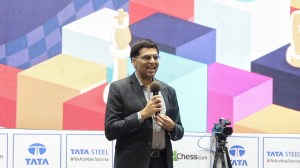Stay updated with the latest - Click here to follow us on Instagram
Final plan ready for a solar Chandigarh
To conserve energy under the Solar City initiative,the UT Administration has proposed several measures for both residential and commercial areas of the city.
To conserve energy under the Solar City initiative,the UT Administration has proposed several measures for both residential and commercial areas of the city.
Under the initiative,the Administration is aiming to conserve 10 per cent energy in residential and commercial areas in the next three years. This number is likely to touch the 20 per cent mark by 2018. The measures discussed in the final plan will definitely have an impact. We will be able to conserve energy by adopting certain basic measures, Director (Information Technology) Manjit Brar said. The final plan prepared by the Administration recommends the following measures:
RESIDENTIAL AREAS
Residential areas in the city are major consumers of electricity. The current consumption of the residential sector is 497 Million Units (MU) 39 per cent of the total electricity consumption in the city which is growing.
CONSERVATION MEASURES PROPOSED
* Replacing the conventional T-12 (40 watt) copper ballast tube lights with T-5 (28 watt) electronic ballast tube lights. This would save about 42 per cent energy per tube light.
* Replacing the conventional ceiling fans,which consume (70-80 watt),with fans which consume 50 watt. This would save 37 per cent energy per fan.
* Replacing the existing unitary air-conditioners with BEE-labelled air-conditioners
If these measures are implemented,the total energy consumption would reduce to 397.6 MU from the current 497 MU in one year.
However,by the end of this year,only 5 per cent of the devices are expected to be replaced with energy efficient ones. And by then,the consumption would be 572 MU,which is expected to touch 924 MU by 2012.
If 30 per cent of the devices are replaced by 2012,the energy consumption would be 894.13 MU against the expected 924 MU. Under the plan,60 per cent of the devices are expected to be replaced with energy efficient devices by 2015,and 90 per cent by 2018.
COMMERCIAL AREAS
According to the Engineering Department (Electricity Wing),the commercial sector consumes 410 million units of electricity,about 30 per cent of the total consumption in the city.
In commercial areas,devices which consume electricity mainly include lighting and cooling systems (fans,air-conditioners,etc). Studies indicate that not much attention has been paid towards conservation while designing these systems,which leads to wastage of energy.
CONSERVATION MEASURES PROPOSED
(According to Energy Conservation Building Code)
* Optimising the building envelope as per ECBC standards
* Replacing copper ballast tube lights with electronic ballast tube lights.
* Replacing conventional ceiling fans with energy efficient fans
* Replacing the Heating,Ventilation and Air-Conditioning (HVAC) system with ECBC and BEE star standards system.
* Replacing unitary air-conditioners with BEE labelled air-conditioners With these measures,the consumption in the commercial sector can be brought down to 475 MU from 483 MU by the end of this year.
However,100 per cent replacement of these devices would be difficult due to resource constraints. But the process can begin through an Energy Services Company (ESCO) mode,where the ESCO would invest in energy efficient devices and recover the investment through energy savings. Such a system has been implemented by the Delhi Transco in Delhi through collaboration with a CFL manufacturer.
By 2012,the energy consumption in the sector is expected to be reduced to 763 MU from 796 MU,and by 2015 it would be reduced to 1216 MU from 1273 MU. By 2018,the plan envisages,the consumption would come down to 1864 MU from 1946 MU.
ROOF-TOP DEVICES
Roof-top solar Photo Valtic (PV) devices may produce good results in the city. It has been observed that commercial and government buildings and markets have large roof areas,which lie unused.
Under the plan,the grid-connected solar PV systems of 100 to 500 KW capacities can be fixed in commercial buildings and 25-50 KW capacity systems in residential buildings. Roof-top systems of 100 to 250 KW capacities may be recommended for commercial sectors 17,9 and 34,which have commercial,institutional and government buildings.







